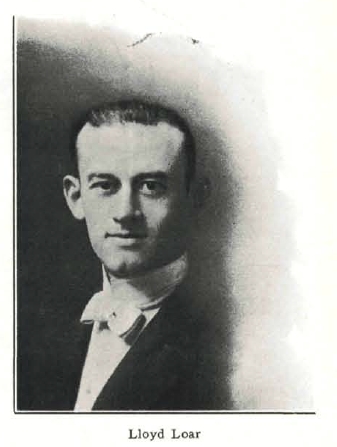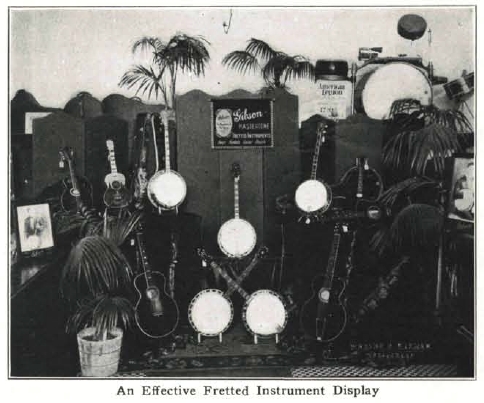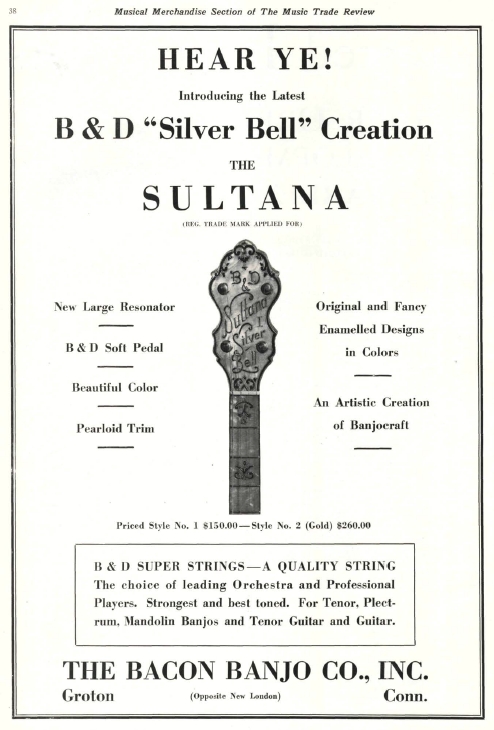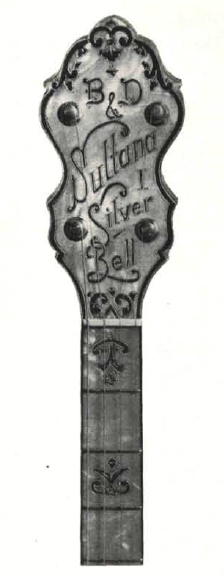| Music Trade Review |
|
Die Zeitschrift Music Trade Review ist online verfügbar: |
|
Music Trade Review - Music
Industry Magazine
Online Library: 1880 - 1933, 1940-1954 The Music Trade Review was published out of New York from 1878 until at least 1956. It apparently suspended publication with the January 1933 issue. Publication was resumed under different management sometime between 1937 and 1940. Our online library contains issues from 1880 to 1933, and from 1940 to 1954. Additional years are available for review at a number of libraries. Search www.worldcat.org for more information about the holdings of other libraries, or ask your local librarian for assistance. |
| |
| --
google Anzeige -- |
| Bitte
teilen sie diese Seite: |
|
|

Fretted InstrumentsTHEIR ORIGIN, DEVELOPMENT and MARKETINGThird of a Series of Articles on Fretted InstrumentsBy LLOYD LOARIn previous instalments mention has been made from time to time of unique advantages possessed by fretted instruments. In order to avoid any suggestion of vagueness it seems best to devote this instalment to a detailed consideration of these advantages— especially from the standpoint of the dealer, upon whom after all devolves a large part of the responsibility of popularizing these instruments and placing them in the hands of the music-performing public. These advantages must, from the dealers' standpoint, be of the sort that make the instruments profitable merchandise to carry in stock. No matter how altruistic a dealer may be he must be a good enough business man to make his business pay him a profit, or he will soon have nothing with which to support himself, let alone with which to indulge his altruism. This does not mean that the dealer's necessity for a profit must be the dominating factor in the music trade. Those same characteristics that make a certain item a desirable piece of merchandise for the dealer to stock and promote make that same item, when viewed from a different angle, a desirable article for the music-loving- and performing public to buy. Profit percentages are pretty well established and about the same on all types and makes of instruments made by reputable makers; so that factor hasn't much bearing. What the dealer must consider is rapidity of turnover, store space occupied, investment necessary in proportion to return, number of prospective customers available, and things of that nature. That fretted instrument characteristics which give them a high rank in these things also entitle them to interested consideration from musical instrument buyers will be shown later. What are these characteristics of fretted instruments that make them desirable merchandise from the dealer's standpoint? We will take them in turn so that each may be dealt with justly. Investment. A dealer can carry a representative line of fretted instruments and have less capital tied up in stock than with any other type of instrument. Even a large music store can plan so that the average investment in unsold instruments over a year's time is not much over $1,000, and it is not at all impossible to turn this over twelve times in a year, with the right sort of planning and a capable small goods man to carry out the plans. If the store overhead and promotion expense are in proportion this should mean a net profit to the store of about $6,000, surely more than can be realized from any other line with a $1,000 investment. And whether conditions demand that this investment be doubled or halved, the proportion of income to investment can be maintained as above. Overhead. The amount of store space necessary to give to a complete line of fretted instruments is considerably less than with any other family of music merchandise. A stock planned to represent an average investment in unsold goods of about $1,000 can be shown effectively in one good-sized display case. A music store that carries pianos and radio exclusively, for instance, can install a representative line of fretted instruments without increasing the size of the store, and still have room for just as many pianos and radios as they had previously. The only expense in the way of equipment would be for shallow wall display cases. As for salesmen, one good man who can demonstrate effectively, knows the possibilities of the instruments, knows how to contact with outside prospects and sources for prospects, and realizes the value of consistent, inexpensive outside promotion work, should be enough to handle our averaged $1,000 stock. If necessary he might have to handle another department also; or if sales justified it, two or three salesmen with some of them also serving in a nearby closely related department might be desirable. Hut if the sales overhead is always kept in proportion to the income possibilities and thebalance of the store overhead charged to these instruments is calculated in proportion to the space they occupy and the amount of invested capital necessary, as it should be, and not the amount of sales—their overhead will be found less than for any other type of instrument. Selling Price. While this may seem more important to the purchaser than to the dealer it isn't really so. The more the dealer can give his customers for their money the better it is for his business— provided he makes the fair profit to which he is entitled. We say it advisedly—the purchaser of a good fretted instrument gets as much or more for his money than with any other type of musical instrument. He can pay from $35 to $50 and secure an instrument that in tone and workmanship is better than an equal amount will buy in other instruments; or he can spend as much as he pleases and still get his money's worth. Sturdiness. The fragile sensitiveness necessary to bowed-instrument efficiency is not necessary to fretted instruments. A well-made fretted instrument with a satisfactory tone will stand more hard usage and still be able to carry on than any other type. This does not mean that they can be sold with the advice that it is unnecessary to take any care of them; no musical instrument worthy of the name can be built with the sturdiness of a truck. It does mean, however, that many of the leading makers of these instruments can guarantee them for life against defects developing—the strongest sort of a selling argument the dealer can have. And it also means that the dealer will be remarkably free from the expense and annoyance of making good in some way for customers who find that the purchase is not standing up under use as it should. Technic. This again is more important to the dealer than might appear. It is easier to learn to play fretted instruments than other types. The same amount of effort, time and interest will enable the student to play more and better than with any other instrument. The writer knows of students who were in no way exceptionally talented, that were able to play well enough after three months of study to appear creditably in public performance, which is surely not possible with other instruments. Satisfied customers are assets, dissatisfied ones are liabilities, whether the dealer knows it or not. Convenience. Not only are fretted instruments convenient for the dealer to carry, they are convenient for the player. They can be easily taken any place as none of them are unduly heavy or bulky; and any of them can furnish music that is satisfactorily complete in itself, because they can supply both harmony and melody and so are not dependent upon an accompanying instrument for musical completeness. This makes them especially valuable as outdoor and vacation instruments, and gives the dealer a logical reason for pushing their sale at a time when there is not much chance of selling other instruments. Turnover. Fretted instruments are paid for with reasonable quickness when sold on the instalment plan, and when it does become necessary to repossess them they are usually, because of their sturdiness, in good condition. Furthermore, with no other instrument is it so easy to make one sale encourage others. No other instruments lend themselves so well to informal and non-professional ensembles, and with the right sort of intelligent promotional work small groups of players can be expanded into large orchestras and clubs, which means of course more sales of instruments. Then the publicity value of an efficient musical group of this sort in a city or community is very great, when the dealer's name is connected with it even indirectly. This will be dealt with more fully in a later issue, but it earns mention here because of its direct bearing on the rapidity of the dealer's turnover. Promotional Value. This feature has several angles, but the most valuable would seem to be the way in which sales of fretted instruments can be made to lead to sales of other instruments. A tenor banjo or a mandolin player is about ninety per cent able to play a mandolin or a tenor banjo, and the same thing is true of the ukulele or guitar player, and the standard banjo or plectrum banjo player. But the greatest value of fretted instruments in this connection comes from a realization of their peculiar efficiency as preparatory to all the instruments of the bowed-string family. It is a fact that one year of study on the mandolin, and one on the violin will make a better violinist out of the beginner student than three years of study on the violin alone. The beginner rarely has a well-developed sense of pitch, yet if a mandolin is in tune there is no way to play it out of tune; so by the time the student has become a fairly proficient mandolinist he has developed the sense of correct intonation necessary for him to have before he can become a violinist. Then the left-hand technic of the two instruments is identical and he has thus only to master the Bow and the different way of holding the instrument when he changes to the violin. The beginner on the violin is trying to k-arn to do six things at once, none of which he knows how to do, and any of which is very difficult for him to learn to do by itself. Finally, the student can play two instruments or more whose technic does not interfere with each other, and the dealer has sold several instruments instead of one, and the attendant sales of music and supplies are just that much larger. Possibilities of this sort certainly justify a wellplanned consistent "follow-up" on the part of the dealer. I know there are questions and objections that can be raised, but wait until this series is completed—perhaps the answer will appear.  Source: http://mtr.arcade-museum.com/MTR-1930-89-2/37/ http://mtr.arcade-museum.com/MTR-1930-89-2/38/ http://mtr.arcade-museum.com/MTR-1930-89-2/39/ |
B & D "Silver Bell" Creation - The Sultana  Source: http://mtr.arcade-museum.com/MTR-1930-89-2/37/ |
>>> Zurück zum Inhalt - Back to the Contents <<< |
| Wenn
sie diese Seite
ohne Navigationsleiste angezeigt bekommen, dann klicken sie hier um die MandoIsland Homepage zu öffen: |
 |